An embroidery series to honour plants and ancestral knowledges
In 2022 I was invited to create an embroidery work for the installation “Blacknuss – technologies of joy, care and intimacy”, by Luiza Prado and Obaro Ejimiwe at Kampnagel (Hamburg, Germany). The resulting cross-stitch composition, “Homage to the unnamed”, honours four plants that were named after male botanists: Bertholletia excelsa, Carapa wohllebenii, Ficus erecta (also known as Ficus taquetii, and Ficus sieboldii), and Haemanthus deformis (also known as Haemanthus mackenii, and Haemanthus baurii).
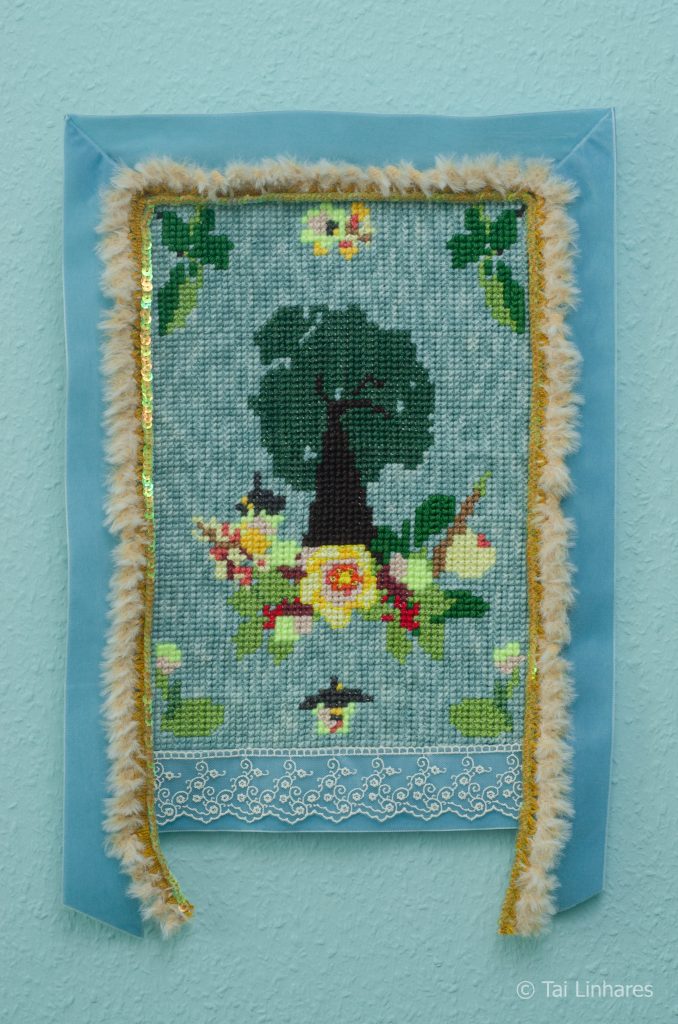
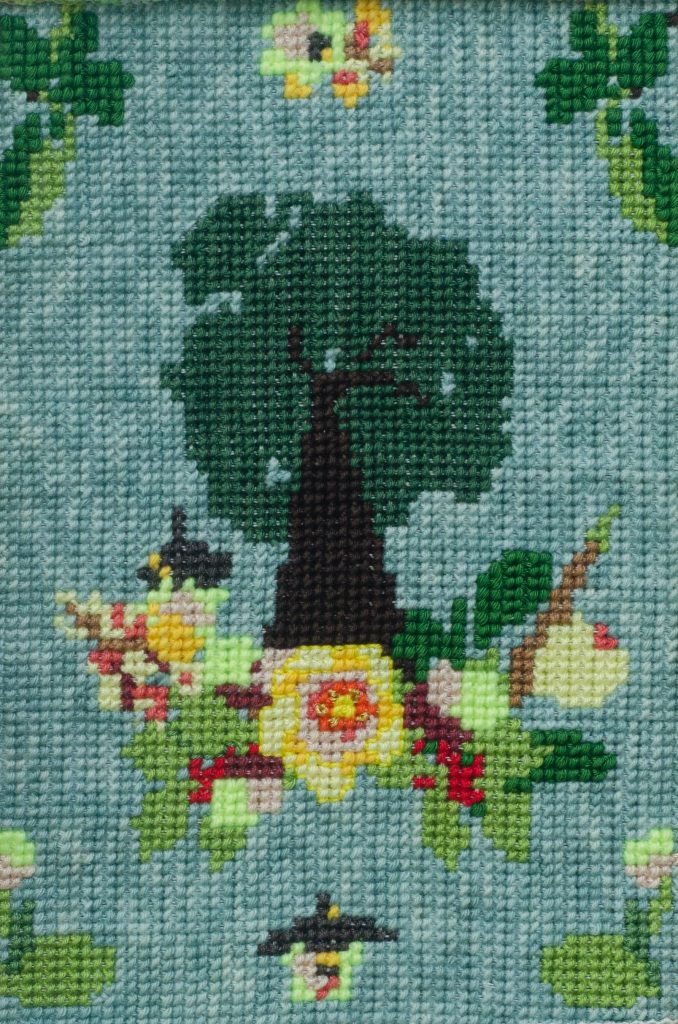
The embroidery piece reiterates the data art project “named after Men”, in which a bot posts every day one plant that pays homage to a man. In each post, the plant tells in the first person the history of its scientific categorization. These stories are enriched with hyperlinks that empower the reader to investigate the colonial relations hidden in presumably cold botanical facts. Some of these plant stories can be read in the article “Named after Men – Colonial exploitation and egocentric bragging at the roots of the botanical sciences”, originally published on the design magazine Futuress.org.
In a second piece, “Homage to the unnamed – Herbarium Series”, I used naturally dyed yarns, to consider other dimensions of plant agency in which the possibilities offered by natural pigments define the colour palette of the embroidery work. Pixelation and natural colours immediately disturb the value of an archive image made to support taxonomic classification. This work is a visual representation of the botanical database’s incompleteness, which doesn’t allow us to comprehend the plant species in its total complexity. This fuzziness is an invitation to reimagine botanical practices, which could include capturing the plant’s texture, scent, taste, and kinship relationships with other species.
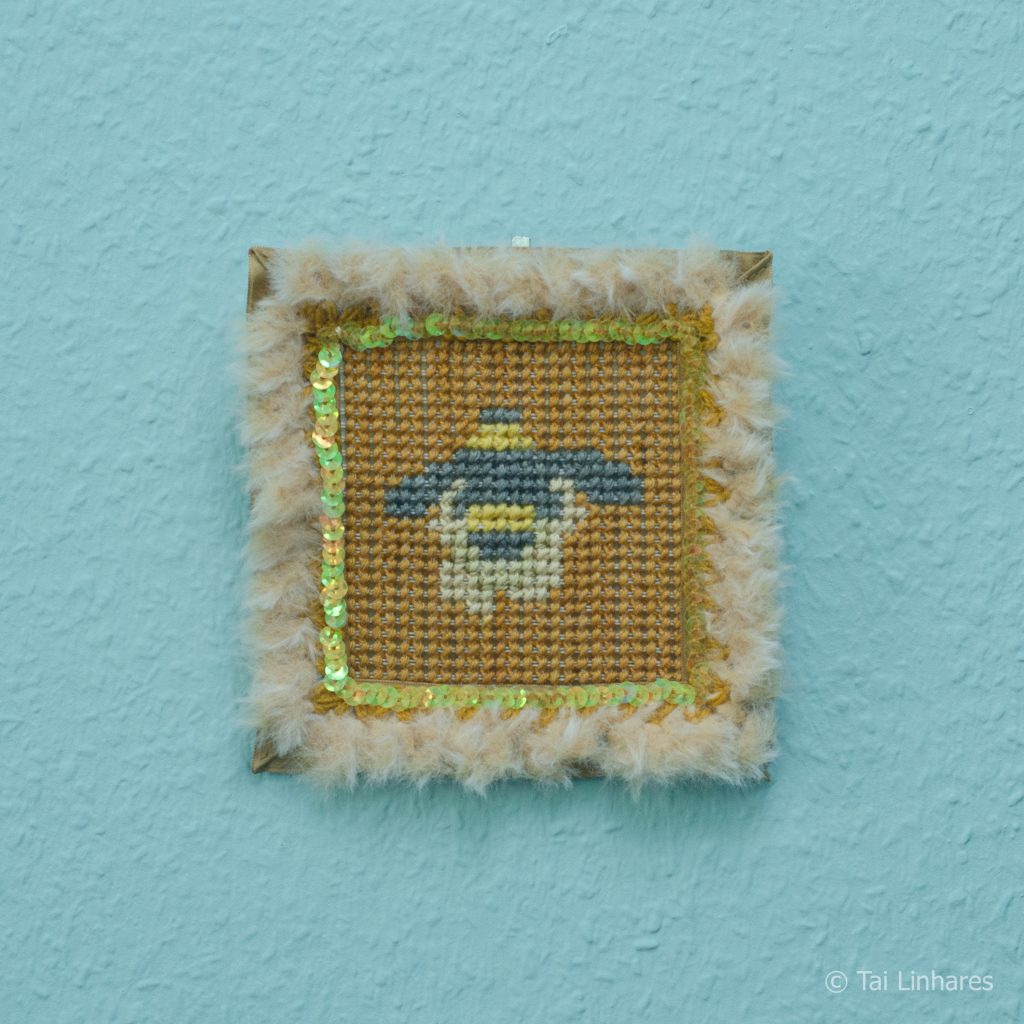
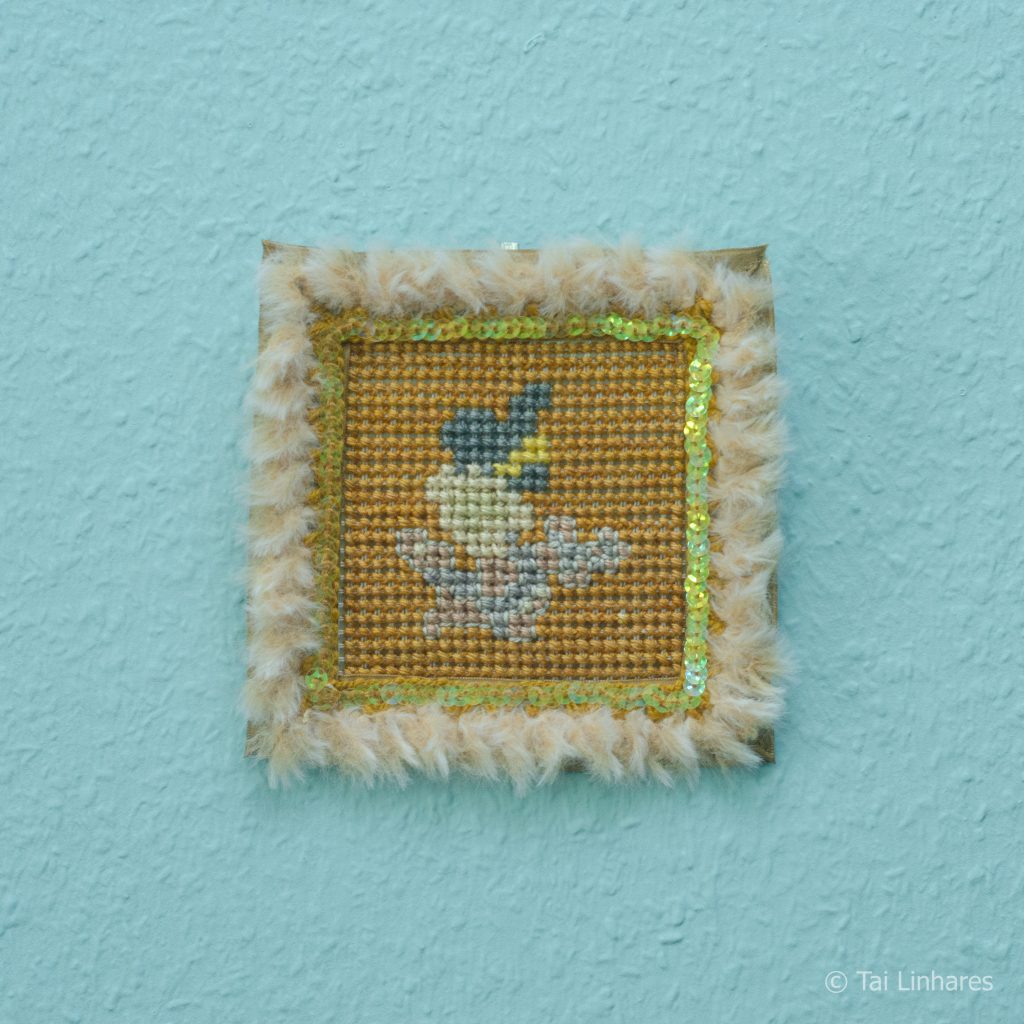
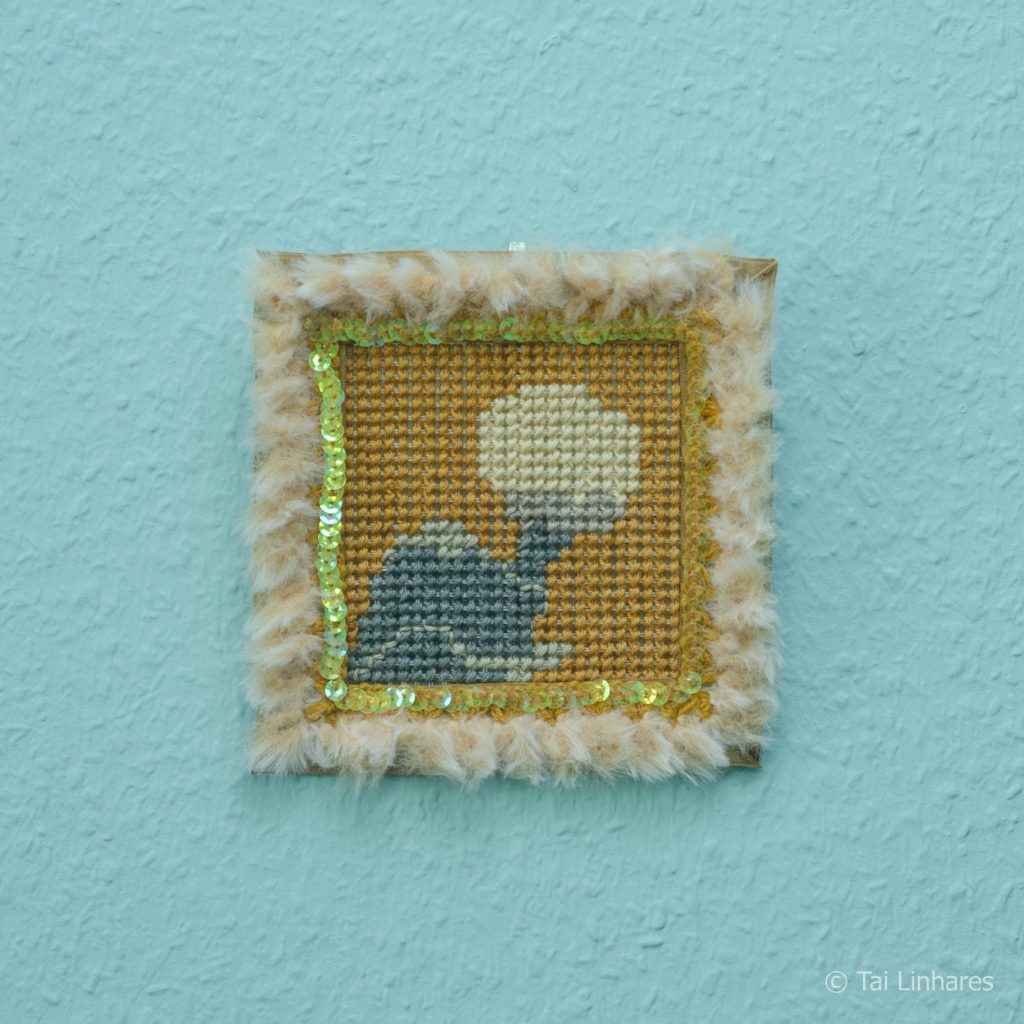

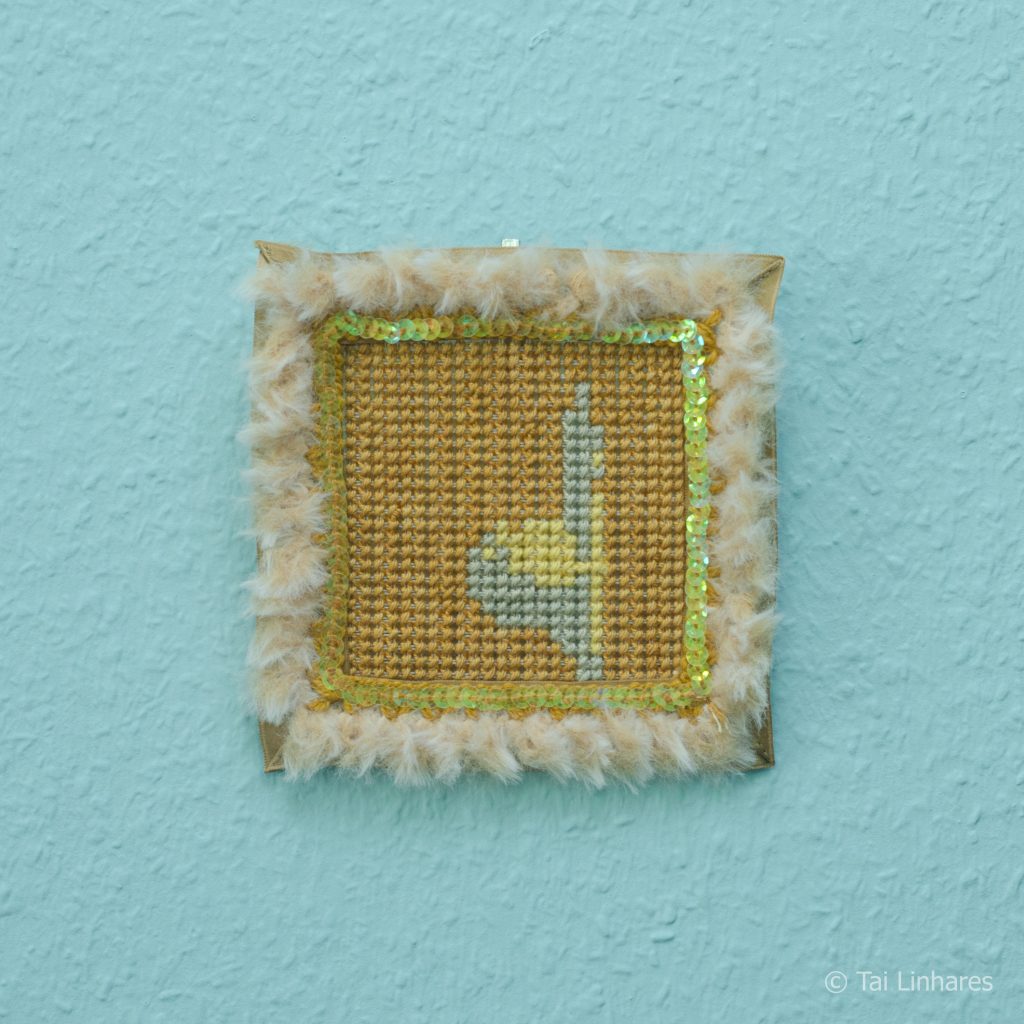
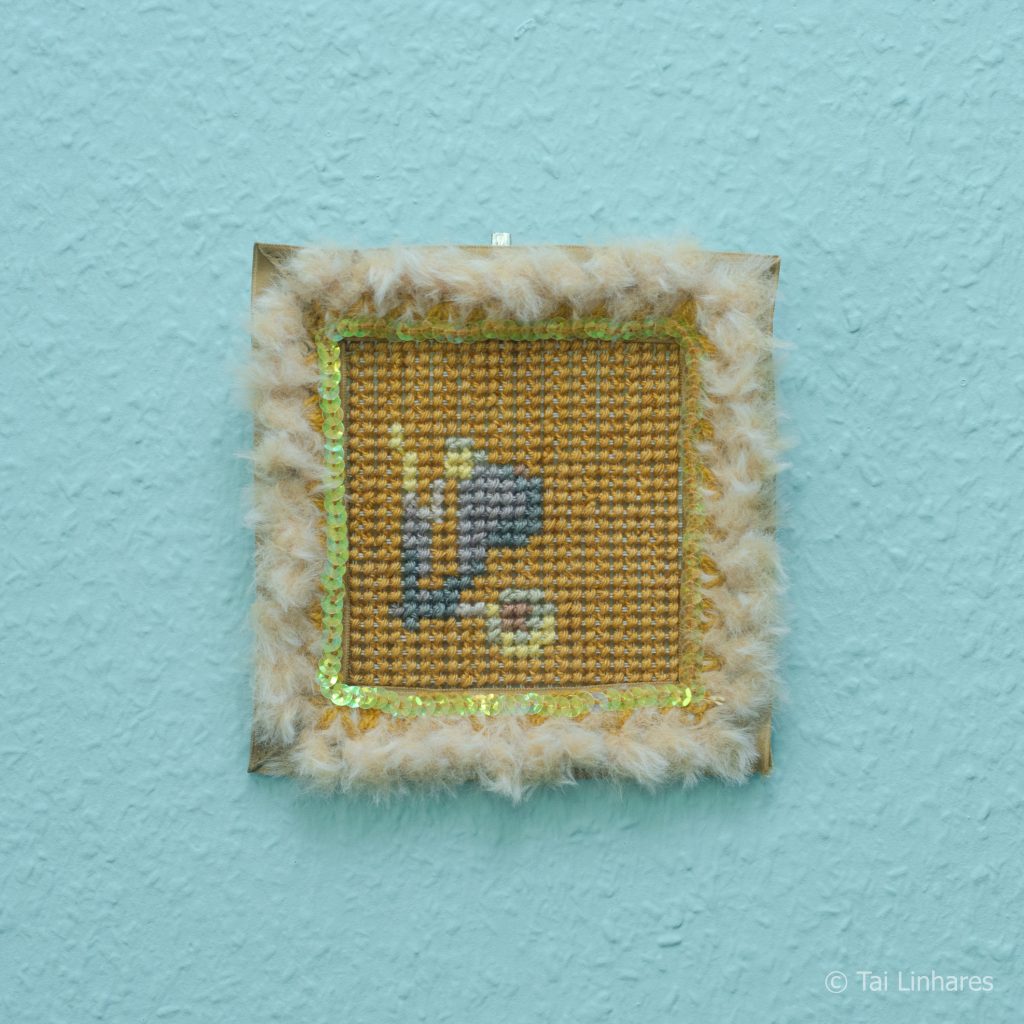
Embroidery is not only an artistic form of expression, nor are plants simple objects of contemplation for me. Handcrafts and house plants are also propellers of affect with female relatives, for instance by exchanging pictures of beautiful crochets and blooming flowers on Whatsapp. They are part of our check-in practices with people we love but who are distant. I was introduced to handcrafts as a child by my grandmother. When I was a teenager, a communitarian cross-stitch course was my first experience with a female “safe space”. This embroidery series is also an homage to the many women whose knowledge has been denied and expropriated for many centuries. “Homage to the unnamed” celebrates the power and beauty of ancestral women-led communities of practice.